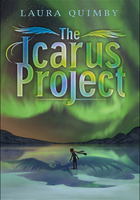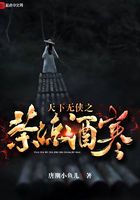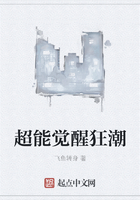FOR
Jim and Doug
THE VALOROUS ARE TOO OFTEN DEAD OR UNRECOGNIZED
CHICAGO MIGHT DISAGREE. NEW YORK MOST CERTAINLY WILL. SOME OTHERS MAY WEIGH IN AS WELL. THINK BOSTON, AND PHILLY. STILL MORE MAY TAKE ISSUE.
Each of those destinations has a fine police department. Many of them claim unique histories. Some of which are lengthy and impressive. All have common ground.
None is the LAPD, and none has such a storied past.
Accordingly, none has amassed a history that supports a book of this magnitude. This volume isn't just about crime scene photos. All PDs have them. The narrative offered on these pages, and its author, are equal parts of the book's relevance.
Therein lies the distinction.
The Los Angeles Police Department is, and has been, a great police force for many years. Interest in the work done by the LAPD's men and women is easily quantifiable. Look at television, look at motion pictures. Then, predate both media to radio. The LAPD was there, and not by chance. Simply because the public consumed broadcasts of LAPD antics and activities via Calling All Cars. There was Then and is Now a market for virtually all things LAPD, including its history. In that market is a demand, hence programming and feature films, and of course, books.
It's been 10 years since James Ellroy collaborated with then Chief of Police William Bratton to bring crime scene photos out of the LAPD archive and into the publishing world. There were many descriptions for the book and the photos. Fascinating, chilling, artful were but a few. The photos were great. The narrative, however, not so much. One of the book's drawbacks was the lack of text. Discovering the circumstances depicted required a journey away from the image, no matter how striking it was. Akin to an eighth-grade math book, the answers were in the back.
LAPD '53 is a look back at a different Los Angeles, and a different LAPD. Sure some of the scenes will appear familiar, as the nature of crime has a level of consistency that is immune to the passage of time. The photos, however, won't require page-flipping. The stories for many were found through various means during the research phase of the book. Thus, the photos are supported by Ellroy's narrative. But it's not just Ellroy's prose that sets this work apart. The brew also includes his vast knowledge of LAPD history, the likes of which remains the envy of those associated with this project and the Los Angeles Police Museum, the organization that benefits from its long-standing association with Ellroy.
Most certainly Ellroy is a supporter of the men and women of the LAPD. He credits them with saving his life many decades ago, at a time when his credentials were not so numerous. Since that time, Ellroy has had 19 books published and has earned praise throughout the literary and literal worlds. He's also seen a half-dozen of his movies made. Now he has spent more than 30 years as one of this nation's most respected novelists. He's a true master of the written and spoken word. For the past decade, he has devoted himself to supporting the folks who collect and preserve LAPD history at its museum in the Highland Park neighborhood of Los Angeles. It's a place where there is no disagreement about police history.
So it's time to get over it in Beantown, the Big Apple, the Windy City and the City of Brotherly Love.
LAPD rules!
These are words often heard beyond these pages and frequently spoken by the Scots/Angeleno author of this book. Words true today and true more than six decades ago. Yes, the cops in L.A. ruled in 1953. They reported to one of the most revered cops of the 20th century—William H. Parker. He was tapped to reform a police department gone astray, and he succeeded. His tenure as LAPD Chief spanned 16 years. So undeniable were his achievements that the LAPD's world-famous headquarters took Parker's name not long after his untimely death in office during the summer of '66.
But Parker lent his name to more than a building. It was a philosophy of policing, one that served L.A. and many other places well for many, many years. A rather stern attorney and decorated D-Day vet, Parker was tasked not just with the reform of the LAPD, but with the construction and completion of an institution. Reform most certainly was a major goal. Parker delivered much more. He expanded the influence of the LAPD beyond the City of Angels. Families brought the LAPD into their living rooms, spurring curiosity and, ultimately, admiration.
To say his was a flawless administration would be a misrepresentation of history. Parker once acknowledged that as long as the LAPD recruited from the human race there would be problems, and there were. Almost immediately for the Catholic chief and maverick.
A look at one of Ellroy's previous works, L.A. Confidential, reveals a fictional treatment of one of Parker's early challenges. Often referred to as Bloody Christmas, it would better be described as a mass jailhouse beating. Eight cops were indicted for lumping up some prisoners who were rumored to have gravely injured an LAPD officer. A bunch of them went to jail. One of them was a Police Academy classmate of Parker's driver, Daryl F. Gates. Post-LAPD, the disgraced cop found his true calling, as a barber.
Parker had just concluded the mop-up of this scandal when 1953 rolled around. That's important to know because the LAPD of 1953 was his.
Parker commanded the LAPD.
He had to in order to reform the LAPD.
He had to in order to build the institution that the LAPD ultimately became.
He had to in order to gain the confidence of Hollywood.
Remember, Dragnet turned out to be little more than an audition for the LAPD. If there were an Academy Award for lifetime achievement by a police department, the LAPD would stand alone at the podium. Parker should be around to accept the award. Ellroy should make the presentation. Both would thank those who serve and have served.
It's a pretty cool visual, the tall, incredibly eloquent author sharing the stage with the authoritarian chief wearing an Eisenhower jacket and horn rimmed glasses. What would they be conversing about?
LAPD '53!
More contemporary and real is the conversation about the conception and creation of this book. Since the beginning of the Museum's association with James Ellroy, he has aspired to introduce LAPD history into any dialogue about Los Angeles. As many do, he firmly believes that the history of this city is the history of the LAPD. In good times and bad, the evolution and development of the nation's second-largest city has mirrored the evolution of its police department. One of the principal methods of entering into this dialogue is via the written word, specifically as found in books. This approach offers an ancillary benefit for the Museum—a publishing program.
Museums that publish books are typically much larger, more established, and not as topical as the Los Angeles Police Museum. A great level of prestige is assigned to those institutions that publish regularly. Frankly, it is unheard of for a museum of this size and scope to engage in a publishing program with an author as accomplished as James Ellroy. Plain and simple, it's an honor, particularly since it was his idea, and one that he stands behind wholly.
The Museum gladly accepted his proposal and began work by culling crime scene photos from the various decades of the last century, beginning with the 1920s, as the initial concept was to provide a sampling of photos from across the span of four or five decades. It was during this process that Museum staff and volunteers recognized that a single year provided more than enough photographic material to illustrate this book. As research into the photos progressed, project personnel further realized that 1953 was a year of particularly unusual cases. Immediately recognizable were the photos from the murder of Ruth Fredericks, who was killed by her husband, whose 1953 handle was the "Croquet Mallet Slayer." More photos, those depicting a dark day when an LAPD officer committed a double-murder suicide, were also immediately recognized. As the number of unusual cases grew, so did the variety of crimes depicted. The project quickly satisfied Ellroy's criterion that the book not be a collection of "splatter shots."
Upon compiling the stories and photos from 1953, all were confident that the material comprised a book worthy of publishing. As was the prestigious New York publisher Abrams Books. Work commenced at the Museum immediately after a publishing agreement was reached. Photos were scanned, more research was conducted and completed and finally the text was written.
Unlike many books that have a single author responsible for its creation, this was a collaborative effort. A group of volunteers, each very interested in L.A. and LAPD history, devoted many, many hours to the various aspects of the book. Two are accomplished historians in their own right. More project personnel were drawn from Museum staff. The final composition of the project team was a perfect mix of very accomplished supporters of the LAPD and its Museum, directed by a very patient yet driven bestselling author. The book demanded nothing less, and no one involved was willing to provide anything less.
While working to produce LAPD '53, those not entirely familiar with the LAPD of the era sought to learn more about the year, the city and its police force. The Museum's unique collections helped with this learning curve. So did one of the Museum's long-serving volunteers, Cal Drake. Cal graduated from the LAPD Academy in December 1952. Largely, his rookie year was the subject matter that all were consumed with.
Beyond the living history offered by the now-retired Sergeant Drake, the Museum's paper and photo collections helped re-create the technology-bare year under consideration. From the Museum's collection of LAPD annual reports was drawn the 1953 edition. The full year's run of daily bulletins was examined over and over again. Each 1953 issue of the Beat magazine was scrutinized, as were photographs held in the Museum's archive. County morgue records were viewed in a space nearly as unwelcoming as its examination room. Chief Parker's scrapbook of news stories, along with that of Policeman James E. Barrick, housed information not easily retrievable but extremely valuable to the project.
Cumulatively, the resources amassed at the museum assisted greatly with understanding 1953's big picture and some of its finer details, too. The book crew culled, considered, and concluded via research methods that were never fit for the quiet confines of any library or laboratory. Always lively, sometimes raucous, the work was completed effectively and enjoyably. These were the right people at the right time to ensure this blend of images and language made it to bookstore shelves.
During the process, news reports were discovered in the chief's '53 clipping book that spoke of his possible replacement. It seemed unlikely, as his reforms were still in their infancy. The LAPD's new home and the building that would later bear his name was under construction. Organized crime hadn't packed its final valise. Air operations hadn't yet begun. The LAPD wasn't desegregated. Motor cops didn't have helmets yet. Sergeant Friday hadn't taken on Bill Gannon as a partner yet.
Sure, these major undertakings could be passed along to a succeeding chief, but why would a city want to derail such major undertakings? Well, they didn't. Parker continued with the reformatory evolution he had initiated just a couple of years previous. The aforementioned would occur on Parker's watch.
The photographic images being dealt with also revealed an evolving uniform. Parker's own portraits show changes in his uniform hat. He abandoned the suicide strap that simultaneously helped support the equipment belt and provided a handle for crooks who wanted to risk an unauthorized polka with a uniformed cop. The book crew noticed that uniform hats were of the eight-point variety and always worn. There were no short-sleeved uniform shirts, walkie-talkies or name tags. Uniform insignia and accoutrements were simple but classy. Signs of efficiency were found everywhere. All things considered, Parker's was a small force, having just enough to get the job done.
Thin ranks weren't unique to Parker's era. The 1895 annual report from the Chief to the Police Commission contains a request for more officers. The LAPD has been understaffed for a dozen decades, yet it manages to endure and indeed, on some occasions, thrive.
Such was the case with my times in and around the LAPD. They now number more than 30 years, beginning with my senior year at USC, when I interned with the Planning and Research Division. I transitioned directly from interning to the Police Academy and enjoyed 20 years of service that took me to a variety of plainclothes and uniform assignments. I worked patrol in all four bureaus (regions) of the city, concluding my time in the Northeast area. During this tour, the Los Angeles Police Historical Society was preparing to take possession of the oldest police station in L.A., the Highland Park Station, for the purposes of opening an LAPD history museum. This building was the predecessor to the one in which I was last assigned and a logical place to exhibit the LAPD's past.
In 2001, the Historical Society opened the Museum, making it one of the only full-time municipal police museums in the country. A couple of years later, and not long after my LAPD retirement, I took over the Museum as its executive director, leading a small staff, working with a large board of directors and assembling a dedicated and truly talented corps of volunteers.
The ensuing years, 10 of them as this is composed, brought great change to the Museum, its collections and its reputation. Nothing is as it was when I arrived. The Museum is populated with professionally built exhibitions. The audio tour is the only one of its kind in the nation. Major building and preservation projects have been completed, and the Museum has emerged as a leader in this segment of the larger museum community. The Museum has received news coverage throughout the world and has been featured on television shows on many occasions. Visitation has increased greatly, and people who generally would not experience the Highland Park area of L.A. make it here just to see the Museum.
It is these people who tell us how wonderful the Museum has become. For as flattering as these words are, the Museum is but the public countenance of so much more. Conserving and preserving the LAPD's history is not as visible to the general public. These efforts go on behind the scenes, where we preserved the only known portraits of some of the LAPD officers killed in the line of duty. We secure and care for bejeweled, gold badges. The oldest known photos of LAPD officers remain in residence here. So does a collection of all books about the LAPD, which was assembled by a retired police officer. And all of it is done for one reason …to support the men and women of the Los Angeles Police Department, an agency that was born in a time before technology permitted constant public comment.
People behaved better Then.
They dressed better Then.
Those that didn't might Now be found right here.
In LAPD '53.
Glynn Martin
LAPD, RETIRED















